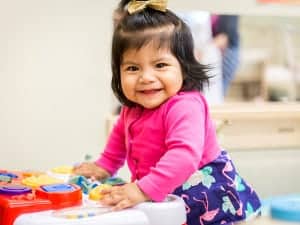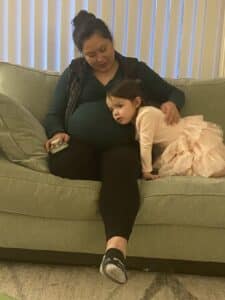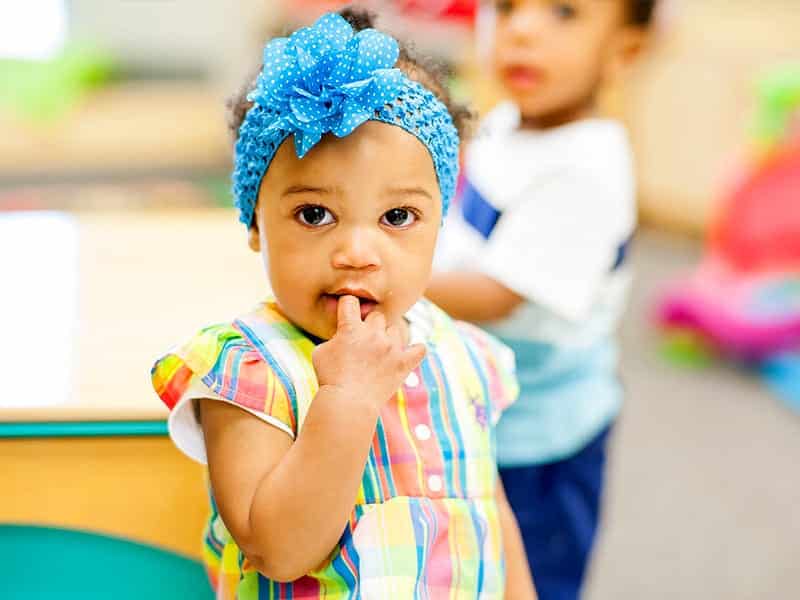Strengthening family engagement and retention in home visiting programs are crucial for supporting positive lifelong outcomes for children and families. Here’s a peek at some of the things we are learning about ways to enhance family engagement and retention:
Increased Communication and Check-Ins: Regular and open communication keeps families engaged and connected. Frequent check-ins, whether through phone calls, text messages or virtual meetings, allow home visitors to stay in touch with families, offer support, and address any concerns or challenges families may face.
Flexibility and Individualization: Recognizing that each family has unique needs and circumstances, programs can offer flexible approaches and individualized support. What works for one family may not work for another, so tailoring services to meet families’ specific needs and preferences is fundamental for engagement and retention.
Personalized Celebrations and Surveys: Personalized cards or small gifts to celebrate milestones or achievements demonstrate that the program values and acknowledges the families’ progress. Surveys are also helpful to understand the evolving needs of families and gather feedback to improve program effectiveness.
Engaging Multiple Family Members: Involving various family members during home visits can create a sense of collective support and shared responsibility for the child’s well-being. Engaging parents, grandparents, or other caregivers welcomes input from multiple perspectives.
Flexibility in Scheduling and Locations: Offering flexibility in scheduling home visits and meeting locations can help accommodate families’ unique circumstances, reducing barriers to access. This approach acknowledges that families have busy lives and varying constraints.
Group Connections: Providing opportunities for families to connect in group settings can foster a sense of community and support. Group activities or events can also be beneficial for sharing experiences, learning from one another and reducing feelings of isolation.
Rotating Locations: Rotating locations for connections across the county or service area can help meet families where they are, making support more accessible and inclusive for families.
By investing in the quality of relationships between home visitors and families and implementing strategies that address families’ specific needs and preferences, home visiting programs can successfully promote family engagement and retention.
The above information stems from our Continuous Quality Improvement work with home visiting programs during FY23. To learn more about how home visiting transforms lives, we invite you to explore our work in Washington state.

 For young children, it’s important to show and appreciate the differences within each Latino community. Highlighting cultures by showcasing native attire, delicacies, country flags, differences in written language and general images of each culture help to create a shared understanding of what being a Latino means. This also helps Latino children create an identity and a sense of pride to be a Latino.
For young children, it’s important to show and appreciate the differences within each Latino community. Highlighting cultures by showcasing native attire, delicacies, country flags, differences in written language and general images of each culture help to create a shared understanding of what being a Latino means. This also helps Latino children create an identity and a sense of pride to be a Latino. Whether it is preparing an older sibling for the arrival of a new baby or potty training a toddler, Camille Carlson recognizes that everyone – whether they are aware of it or not – uses
Whether it is preparing an older sibling for the arrival of a new baby or potty training a toddler, Camille Carlson recognizes that everyone – whether they are aware of it or not – uses  Camille uses her expertise to help home visiting programs deliver services relevant to the unique needs of the children and families they support. Her firsthand experience as a parent fuels her desire to improve systems of support for children, their families, and the teams of staff that serve them. Camille’s motivation for this work grew when she was pregnant with her second child. “During my pregnancy, I had the support of home visitors and supervisors at my fingertips. As I listened to home visiting professionals across the state discuss parent coaching and family observations, I started applying their valuable insight to navigate the changing dynamics of my life with two children. This process helped me gain confidence in my parenting skills, and it was a beautiful reminder that family is central to our work. I was overwhelmed by the support that was given to me and the confidence that it brought, which emphasized the importance of sharing such a positive experience with others.”
Camille uses her expertise to help home visiting programs deliver services relevant to the unique needs of the children and families they support. Her firsthand experience as a parent fuels her desire to improve systems of support for children, their families, and the teams of staff that serve them. Camille’s motivation for this work grew when she was pregnant with her second child. “During my pregnancy, I had the support of home visitors and supervisors at my fingertips. As I listened to home visiting professionals across the state discuss parent coaching and family observations, I started applying their valuable insight to navigate the changing dynamics of my life with two children. This process helped me gain confidence in my parenting skills, and it was a beautiful reminder that family is central to our work. I was overwhelmed by the support that was given to me and the confidence that it brought, which emphasized the importance of sharing such a positive experience with others.” Quality improvement is essential to providing successful home visiting services where staff collaboratively establish goals, reflect and create actionable steps for improvement. By adhering to a CQI process, home visiting programs can build strong relationships with families, make well-planned decisions and increase positive outcomes to achieve better support for children and families.
Quality improvement is essential to providing successful home visiting services where staff collaboratively establish goals, reflect and create actionable steps for improvement. By adhering to a CQI process, home visiting programs can build strong relationships with families, make well-planned decisions and increase positive outcomes to achieve better support for children and families.